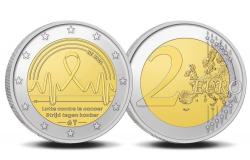The federal budget tabled on April 16 introduced new provisions for the calculation of capital gains tax.
Posted at 3:35 a.m.
Updated at 6:00 a.m.
For many taxpayers, they are like a riddle wrapped in mystery within an enigma, as Churchill would have said.
Let’s take the problem from the beginning in a fictional conversation with financial planner and tax specialist Josée Jeffrey, from the Focus retirement & taxation firm.
PHOTO PROVIDED BY JOSÉE JEFFREY
Financial planner and tax specialist Josée
Jeffrey, from the Focus retirement & tax firm
— What is a capital gain?
A capital gain is the difference between the price you buy an asset for and the price you sell it for. If the sale price is higher than the purchase price, you realize a capital gain.
— I plan to sell my chalet for $450,000. Do I have a capital gain of $450,000? It was purchased for $100,000 12 years ago, it had $40,000 worth of improvements, and I paid $10,000 in real estate brokerage fees when it sold.
Several fees will increase your purchasing cost. We think, among other things, of transfer taxes, notary fees, building inspection fees. Certain expenses incurred for major work during your years of ownership are also added to the base price. All of these fees will be part of the cost of your chalet.
In your case, by adding the $40,000 paid for improvement work, your adjusted cost base will be $140,000 ($100,000 plus $40,000). All costs relating to the sale, such as your real estate brokerage fees of $10,000, will reduce the capital gain. Let’s recap:
Sale price: $450,000
Less adjusted purchase cost: $140,000
Less expenses for the sale: $10,000
Capital gain: $300,000
— Okay, so I would realize a capital gain of $300,000 after selling my chalet for $450,000. Right now (before the new federal budget measures come into effect), do I have to pay taxes on $300,000?
Rest assured ! You won’t pay tax on the entire $300,000 capital gain. Right now, the math is pretty simple. Only half of the capital gain (50%) is taxable, or $150,000.
— Okay, the inclusion rate is 50%, which means that only $150,000 of my $300,000 capital gain is taxable. But taxable how?
The taxable portion of the capital gain is added to the taxpayer’s income in the year the property is disposed of.
In the federal income tax return, the capital gain (or loss) is calculated in Schedule 3. The taxable capital gain, therefore after the 50% inclusion rate, is reported on line 12 700 of the tax return.
It is added to your other income – employment income, QPP benefits, Old Age Security pension, etc. – to constitute your total income.
— So, if I earn a salary of $100,000 in the year, I add my taxable capital gain of $150,000, for a total income of $250,000?
Exactly, assuming you have no other income in the year. Various deductions will be applied – for your RRSP contribution or your childcare expenses, for example – to determine the taxable income on which the tax will be calculated.
— On what other types of property or investments do I have to pay capital gains tax?
You have to pay capital gains tax on assets that appreciate over time, such as stocks, bonds or real estate – a rental duplex, for example. But not on the main residence: it is exempt from capital gains tax.
— Is capital gains tax also payable on the provincial income tax return?
The short answer is: yes.
— The federal budget tabled on April 16 modified the taxation of capital gains. What will change?
As of June 25, the tax inclusion rate on capital gains realized by individuals should increase from 50% to 66.67%, but only on the bracket exceeding $250,000.
— My capital gain of $300,000 on my cottage is above the threshold of $250,000. If I sell it after June 25, does that mean I will have to include 66.67% of $300,000 in my 2024 income?
No, only on the portion of the capital gain that exceeds $250,000. Therefore, the inclusion rate for your capital gain will be 50% on the first $250,000. The new inclusion rate of 66.67% will apply to the excess of $50,000.
Has the Quebec government also changed its capital gains tax rules?
Quebec announced that it will harmonize with the federal government by also increasing the inclusion rate on capital gains above $250,000 annually from 50% to 66.67%. This measure will also apply from June 25.
— Should I rush to sell my chalet before June 25? What difference would that make?
We will take into account federal and Quebec taxes. For simplicity, we will assume that you will have taxable income of $100,000 in 2024, to which will be added the taxable capital gain of $150,000.
If you sell your cottage before June 25, in 2024 you will pay federal and provincial taxes of $98,725 on all of your income, based on an effective tax rate of 39.49% (this is the average rate on all taxable income when it totals $250,000 to $300,000).
If you sell it after June 25, your tax bite will be $102,016.
An extra $3291.
I’ll let you judge whether it’s worth the rush.
But the time frame is very short to make such a decision. There will be strategies that will be established after this measure.


— If we are two co-owners of our chalet which produces a capital gain of $300,000, do we each declare a gain of $150,000 and avoid the inclusion rate of 66.67%?
Absolutely, everyone will be entitled to their first tranche of $250,000 at the 50% inclusion rate.









